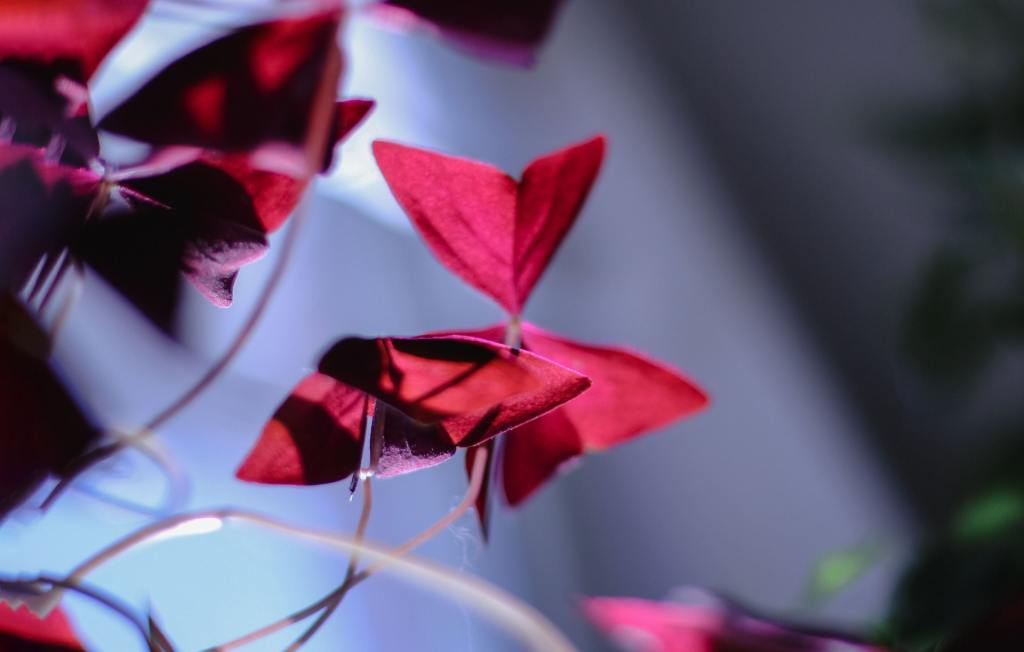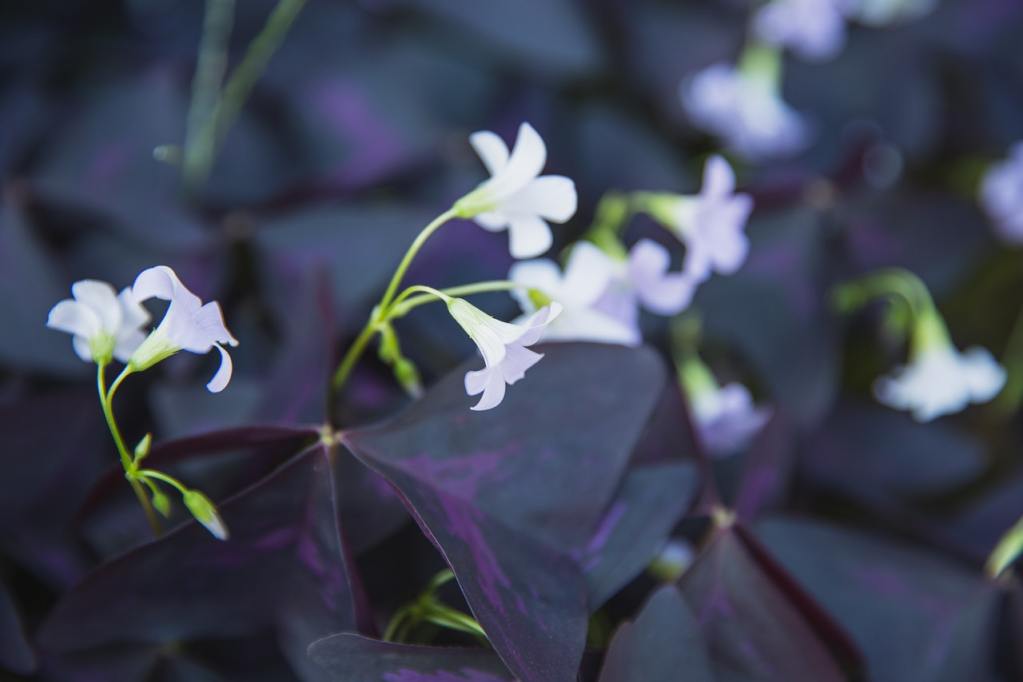Whether you got this plant as a gift and want to be sure to care for it properly, or you’ve been dying to get one and want to be sure you’re equipped to care for it before purchasing, you’ve come to the right place. Here we’ll be covering every aspect of caring for the oxalis plant. This stunning plant is lovingly given as gifts during St. Patrick’s Day and is a favorite among purple plant lovers.
We’re sure you’re going to want to share this one on your social feeds as soon as you get your hands on it. So let’s make sure you’re ready to take care of it!

What is an oxalis?
There is a good chance you’ve never heard this plant called by its real name. The oxalis plant is better known as the shamrock plant; however, there is some confusion around the difference between a shamrock and a clover. To put it simply, not all clovers are shamrocks, but all shamrocks are clovers. But don’t feel bad about getting confused; even botanists can’t decide which clovers are shamrocks. Luckily, we know that the variety called oxalis, which we will be talking about today, is undoubtedly a shamrock and a beautiful one.
You’ve likely seen these stunning purple plants around grocery stores, hardware stores, and garden centers around St. Patrick’s Day. They have three heart-shaped leaves, and when given enough light, they produce delicate tiny white flowers. The leaves open when the sun comes up and close back down when it sets. These little dancing plants are given as gifts and often die because of improper care. However, they’re relatively easy to care for if you know what you’re doing. They can grow up to 12 inches tall and wide, and if grown outdoors in window boxes or garden beds, they can be pretty invasive.

Care tips for oxalis
Anytime we gardeners get a new plant, there are a few weeks of tension as you wait to see how the plant adapts to its new home. Luckily for you, the oxalis plant is a hardy plant that will likely adapt to your conditions like a champ. To ensure you’re giving it everything it needs, here are the care tips that will allow this plant to thrive.
Water
Like most plants, the oxalis plant does not like to sit in water. So wait to water this beauty when the soil is mostly dry, then give it a good soaking. The best way to avoid root rot is to keep the plant in its nursery pot or plant it in a pot with a drainage hole. When you water it, take it to the sink and gently let the water run through until it comes out the bottom. Leave it in your sink until the water stops dripping and return it to its tray. This will allow the soil to soak up as much as possible and give the plant the space to dry out and not get its feet too wet.
Light
This plant can be grown indoors and out, but its lighting needs to change a bit depending on where you decide to keep it. When indoors, the oxalis plant will prefer a bright window with some direct sunlight. This will give the plant plenty of light and encourage it to grow those pretty little flowers. However, when moved outdoors, this plant often shrivels up and dies when placed in direct sunlight. So be sure to find a shadier spot for this plant when outside.
Food
Feeding the shamrock plant is easy; it needs monthly feeding during the growing seasons but doesn’t need anything during the dormant season.
Humidity
When it comes to humidity needs, this plant is easy! It isn’t sensitive to low or high humidity and will be perfectly happy with the average humidity level in your home. Just remember that the more humid the location is, the less watering the plant will need.
Temperature
Anywhere between 65 degrees and 85 degrees will keep this pretty purple plant happy. However, once temperatures hit 60 degrees, you’ll start to see some damage to the plant. So if you’re keeping this plant outside and want to bring it in before the weather kills it, keep an eye on the forecast.
Toxicity
Unfortunately, this plant is toxic to pets and humans if ingested. So if you have a pet that likes to take a little sample of your plants, you might want to avoid getting the oxalis or place it in a room or location where the pet can’t get to it.
You’ve done the first and most crucial step of ensuring your oxalis plant will last you for years and years: educating yourself. Remember not to let the plant sit in too much water, and don’t forget that it likes shade outside, but a bright sunny spot when inside.


